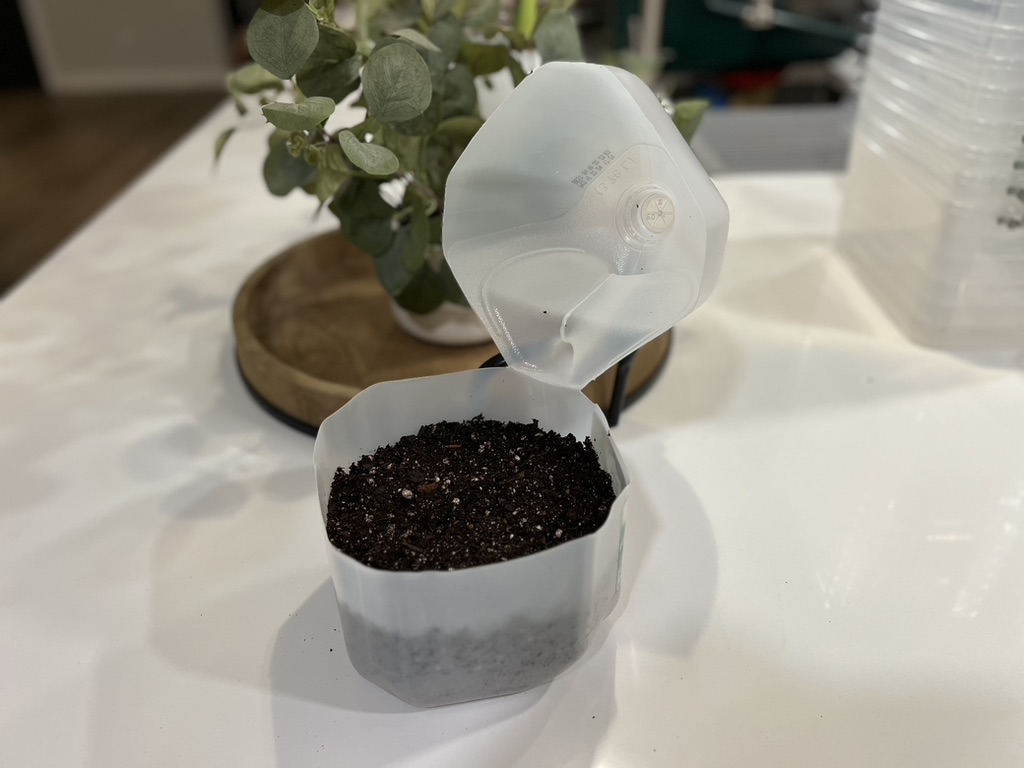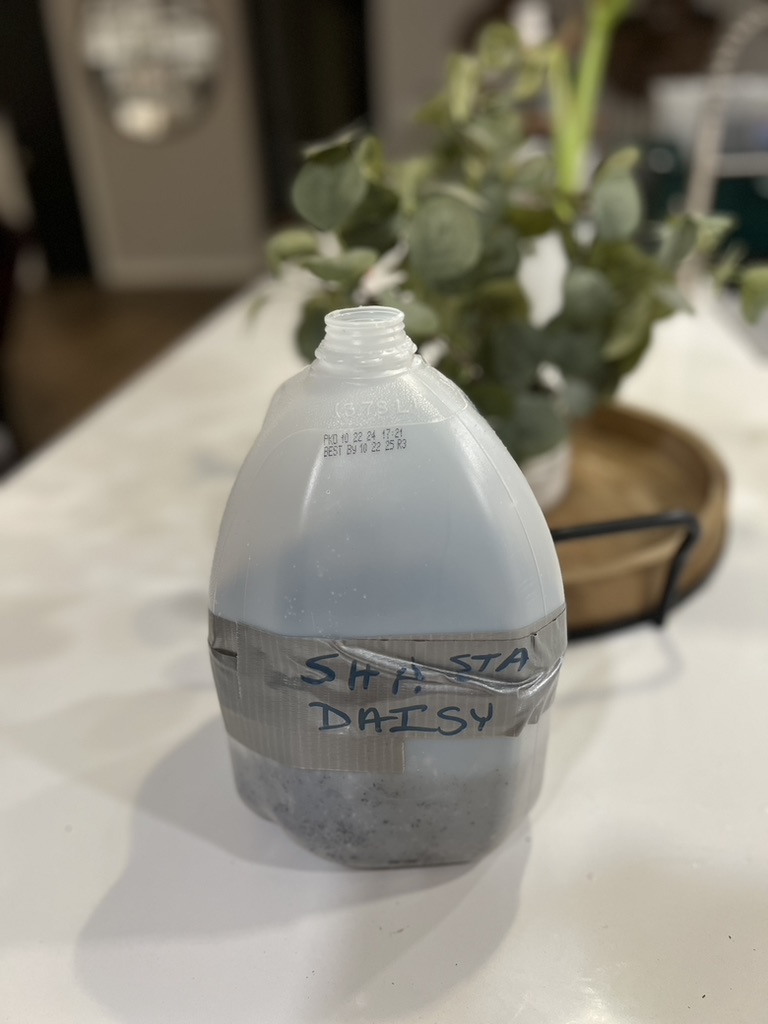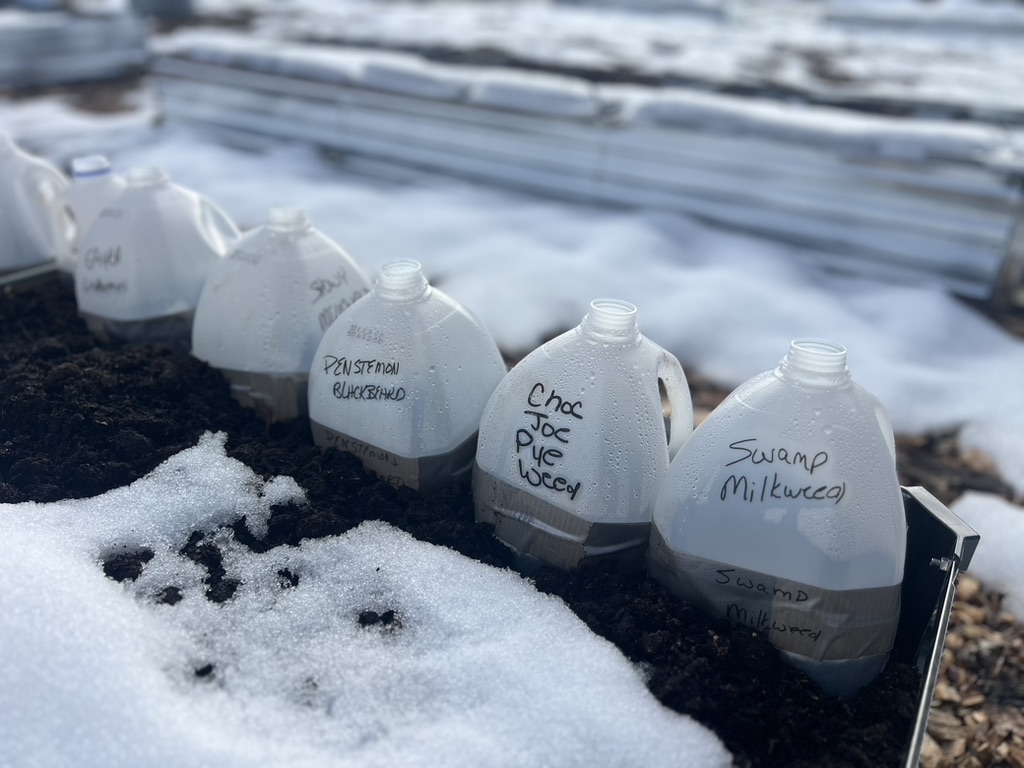Winter sowing is a gardening hack that feels almost magical. Imagine planting seeds in the middle of winter, watching as the cold and snow do the hard work of preparing them for spring. This method is simple, affordable, and surprisingly effective. By using nature’s cycles, winter sowing lets you start your garden early without needing expensive equipment or taking up precious indoor space. Whether you’re a gardening newbie or a seasoned pro, this guide will show you everything you need to know to get started. Plus, it’s a fun and creative way to recycle household items and bring a little life to the winter months.
Key Takeaways
- Winter sowing is a wallet-friendly and eco-conscious way to grow plants during the colder months.
- It produces stronger, hardier seedlings that are naturally acclimated to outdoor conditions.
- This method minimizes the need for grow lights, heating mats, or indoor space.
- Winter sowing can lead to earlier blooms and harvests, maximizing your garden’s potential.
- It’s accessible to gardeners of all levels—just a few recycled containers and some soil can get you started.
What is Winter Sowing?
Winter sowing is all about letting Mother Nature take the lead. Seeds are planted in containers, often made from recycled materials like milk jugs or soda bottles, and left outside during the cold months. The freeze-thaw cycles mimic natural conditions, breaking seed dormancy and triggering germination at just the right time. This low-maintenance approach is especially great for seeds that require stratification—a period of cold and moisture to sprout.
Why Choose Winter Sowing Over Indoor Methods?
- Low Effort: No need to fuss with grow lights or maintain precise temperatures.
- Outdoor Acclimation: Seedlings grow in natural conditions, so they’re tougher and transplant-ready.
- Sustainable and Cost-Effective: Recycle containers and save on electricity.
- Great for Year-Round Gardeners: It gives you something to do during those long, cold months when gardening feels out of reach.
By trusting the seasons to do their work, winter sowing removes much of the guesswork from starting seeds, making it both practical and satisfying.
When Should You Start Winter Sowing?
The timing for winter sowing depends on where you live and the types of seeds you’re planting. Typically, gardeners start around the Winter Solstice (December 21) and continue through January and February. For seeds to benefit from the process, nighttime temperatures should consistently stay below 50°F.
- Colder Climates: You can start earlier since seeds will experience more freeze-thaw cycles.
- Milder Winters: Wait until it’s consistently chilly to ensure seeds receive the cold stratification they need.
“Winter sowing is like giving your seeds a head start, with nature handling the tough parts of the job.”
“Winter sowing is a fantastic way to start seeds that require natural seed stratification before they can germinate. It’s a low-cost, low-maintenance approach that works wonders for cold-hardy plants.”
What You’ll Need to Get Started
Winter sowing is wonderfully low-tech. You probably already have most of what you need lying around the house.
The Best Containers
Recycled plastic containers make excellent mini-greenhouses. Choose translucent options that let light in and protect your seeds from harsh weather.
Here are some great container ideas:
- Milk jugs
- 2-liter soda bottles
- Salad clamshells or deli containers
- Plastic fruit boxes
- Yogurt cups with clear lids
Make sure each container is at least 3-4 inches deep and has enough space for soil and seedlings. Adding a personal touch, like decorating your containers with waterproof paint or labels, can make the process even more enjoyable.
Potting Mix
A well-draining potting mix is essential. Look for blends that retain moisture without becoming soggy. Avoid using garden soil, which can harbor pests and compact too much. Adding perlite or vermiculite can improve drainage.
Seeds and Labels
Pick seeds that thrive in cooler conditions, such as hardy perennials, tough annuals, and cool-weather vegetables. Label each container with waterproof markers or plant tags so you know what you’ve planted.
Simple Tools
Having the right tools makes winter sowing easier. You’ll need scissors or knives for cutting, a marker for labels, and a small spoon or trowel for planting.
| Item | Description | Cost Estimate |
|---|---|---|
| Milk Jugs or Plastic Bottles | Transparent, lidded containers for winter sowing | Free (recycled materials) |
| Potting Soil | Potting soil is optimal for seed germination | $5 – $15 per bag |
| Seeds | Perennials, cool flowers, perennials or annuals that require cold stratification, frost tolerant annuals and cool-weather veggies | $1 – $4 per packet |
| Grease or Oil Based Paint Pen or plant pen | For labeling containers with seed variety and sowing date | $1 – $3 |
| Scissors or Utility Knife | For cutting and preparing the containers | $2 – $10 |
| Small Spoon or Trowel | For planting seeds in the containers | $2 – $5 |
How to Winter Sow: A Step-by-Step Guide
Winter sowing is as easy as 1-2-3! Here’s how to get started:
Step 1: Prepare Your Containers
- Clean your containers thoroughly to remove any residue.
- Cut each container in half, leaving one side attached to act as a hinge.
- Punch or drill 4-6 drainage holes in the bottom to prevent waterlogging.

Step 2: Add Soil and Seeds
- Fill each container with 3-4 inches of moistened potting mix.
- Plant seeds according to the depth instructions on the packet.
- Lightly mist the soil and cover the seeds with a thin layer of soil if needed.
- Label your containers with the seed variety and date.
Step 3: Secure and Place Containers
- Tape the containers shut and remove any caps to allow airflow.
- Place them in a sunny, sheltered spot outside. They should be exposed to rain, snow, and temperature changes.
By following these steps, you’ll create the perfect environment for your seeds to germinate naturally.
What Seeds Work Best?
Winter sowing is ideal for seeds that benefit from cold stratification or can handle cooler temperatures. Here are some excellent options:
- Perennials: Coneflowers, black-eyed Susans, lupines, and milkweed.
- Annuals: Calendula, marigolds, and cosmos.
- Vegetables: Spinach, broccoli, kale, and carrots.
- Native Plants: Butterfly weed and blazing star.
These seeds thrive in the colder months and will reward you with a head start come spring.
Why Winter Sowing Works
Winter sowing leverages the natural rhythms of the seasons to give your seeds the best possible start. The freeze-thaw cycles break down the seed coat, preparing it to sprout when the conditions are just right. Plus, seedlings grow stronger because they’ve been toughened up by the outdoor environment. This means less time spent hardening off plants and more time enjoying the fruits (and flowers) of your labor.

Temperature Requirements and Climate Considerations
To succeed with winter sowing, knowing the temperature and climate needs is key. This method works best in areas with clear freeze-thaw cycles and cold hardiness. Let’s see how these factors affect your winter sowing.
The best temperature for winter sowing is between consistently under 50°F. This range helps seeds germinate due to freeze-thaw cycles. Places with mild winters or irregular freeze-thaw cycles might not be ideal. On the other hand, very cold areas with long freezes can also be tough.
“The key to successful winter sowing is finding the sweet spot where the seeds can experience the natural fluctuations in temperature that mimic their native environment.”
Maintaining Your Winter Sown Containers
It’s important to care for your winter sown containers during the cold months. This includes watering and making sure there’s enough air. Let’s look at the key steps to keep your winter sowing setup in top shape and help your plants grow well.
Watering Winter Sown Seeds
Watering your winter sown seeds needs to be done carefully. You want the soil to stay moist but not too wet. If it rains a lot or snow melts fast, watch out for too much water. Instead of pouring water on the soil, try bottom watering by setting it in a pan of water.
Check the soil often to see if it’s too dry or too wet. Adjust how often you water based on what you find.

Ensuring Proper Ventilation
Adequate ventilation in the spring is key for your seedlings to grow well. Open any covers during the day to let air in. Put them back on at night to keep it warm. Watch for signs of too much moisture or mold, and fix the air flow if you see these problems.
“The key to successful transplanting lies in a well-planned and executed hardening off process. With patience and care, your winter sown seedlings will thrive in their new garden home.”
- Sharp kitchen knives for chopping veggies fast
- A potato masher or ricer for the right chowder texture
- A wooden spoon for stirring and scraping the pot
- A slotted spoon for moving clams from broth
- Sharp kitchen knives for chopping veggies fast
- A potato masher or ricer for the right chowder texture
- A wooden spoon for stirring and scraping the pot
- A slotted spoon for moving clams from broth
Best Plants for Winter Sowing Success
Gardeners can get a head start on their growing season by winter sowing. This method works well for cold-hardy perennials, winter sown vegetables, and native plants. Knowing the right plants to use can lead to a successful harvest.
Cold-Hardy Perennials
Some top cold-hardy perennials for winter sowing are:
- Pansies
- Violas
- Primroses
- Columbines
- Lupins
These plants can handle winter’s cold. They bloom early in spring, adding color to your garden for a long time.
Winter Sown Vegetables
Many vegetables do well when winter sown, such as:
- Carrots
- Beets
- Spinach
- Radishes
- Peas
These cool-season crops can be sown directly outdoors. They get a head start on the growing season, giving you an earlier harvest.
Native Plants for Winter Sowing
Using native plants in your winter sowing can also be successful. Good choices include:
- Coneflowers
- Black-eyed Susans
- Milkweed
- Butterfly Weed
- Blazing Star
These plants thrive in your local climate. They also help pollinators and other wildlife.
When picking plants for winter sowing, think about your local climate, sun, and what you like. Choosing the right plants will make your garden vibrant and productive all season.
| Plant Type | Benefits for Winter Sowing | Examples |
|---|---|---|
| Cold-Hardy Perennials | Tolerate chilly temperatures, provide long-lasting blooms | Pansies, Violas, Primroses, Columbines, Lupins |
| Winter Sown Vegetables | Can be sown directly outdoors for earlier harvests | Carrots, Beets, Spinach, Radishes, Peas |
| Native Plants | Thrive in local climate, support pollinators and wildlife | Coneflowers, Black-eyed Susans, Milkweed, Butterfly Weed, Blazing Star |
Conclusion
Winter sowing is an easy, eco-friendly way to grow a thriving garden. It’s perfect for gardeners who want to save time, money, and indoor space while letting nature do the work. By starting in winter, you’ll enjoy earlier blooms and harvests, plus the satisfaction of knowing you’ve grown your garden from scratch.
So, grab some containers, seeds, and soil, and give winter sowing a try. You’ll be amazed at the results come spring. It’s a fantastic way to stay connected to gardening year-round and a great opportunity to experiment with new plants and ideas. Happy gardening!
FAQ
What is winter sowing and how does it work?
Winter sowing starts seeds outdoors in the cold. It mimics nature’s cold stratification. This lets seeds grow into strong plants when spring arrives.
What are the benefits of winter sowing compared to traditional seed starting methods?
Winter sowing makes plants stronger and harvests come sooner. It’s also cheaper. Plants get used to the outdoors naturally, making them garden-ready.
When is the best time to start winter sowing?
Start winter sowing in late winter or early spring.
What kind of supplies and materials do I need for winter sowing?
You’ll need containers, potting soil, seeds, labels, and tools. Use items like milk jugs for your setup.
How do I prepare the containers and add the soil and seeds for winter sowing?
Make sure containers drain well. Add potting mix, plant seeds, and label them. Follow each step carefully for best results.
What types of seeds work best for winter sowing?
Plants like perennials, annuals, and some vegetables do well. Try poppies, pansies, kale, and carrots.
How do I care for the winter sown containers and monitor their progress?
Keep the right moisture and air flow. Protect from harsh weather. Check seedlings often for pests or mold.
What are some common problems that can arise with winter sowing, and how do I troubleshoot them?
Watch out for pests, mold, and temperature changes. Act fast to solve these issues for successful plants.
When and how do I transplant the winter sown seedlings into the garden?
When seedlings are 2 or more inches high.
What are some of the best plants for successful winter sowing?
Many plants do well, like sunflowers, zinnias, kale, and native wildflowers. They’re cold-hardy and thrive outdoors.
Share this post: on Twitter on Facebook








